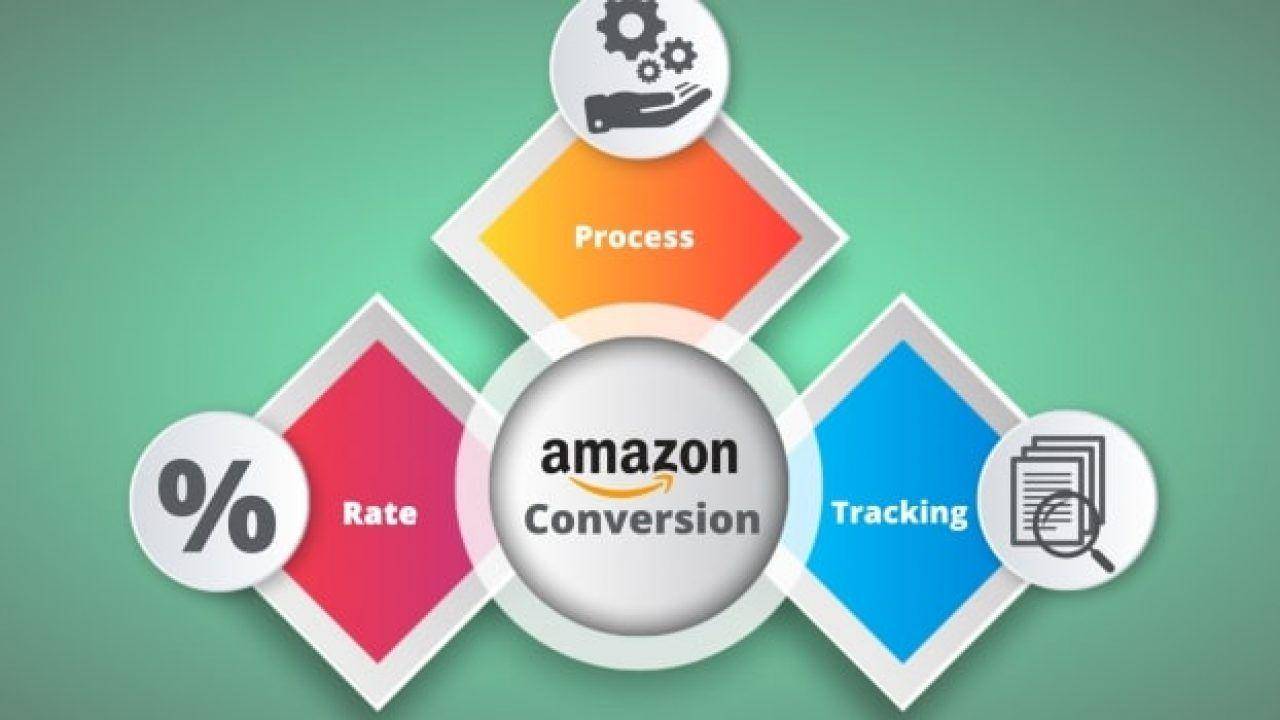Handling Amazon’s PPC campaign structure can often be tricky. Wholesale Amazon sellers especially need to invest an ample amount of time and effort to ensure that their campaigns are appropriately structured.
Why should you worry about the structure of your PPC Campaign?
The structure of your PPC Campaign is just as crucial as a skeleton is to your body. The design of your campaign determines how, when, and where your ads would appear. This would determine if you are attracting enough and the right traffic which can strongly affect your sales. Since you’re putting a lot of time and effort into structuring your campaign, you might do it right.
In this blog, we’ll walk through different PPC campaign structures based on how you sell your products on amazon.
Before jumping ahead, let us look at an essential term that would frequently be used later in this blog – ASIN.
WHAT IS ASIN?
ASIN stands for Amazon Standard Identification Number. It is a ten-digit alphanumeric code that is unique to every product on Amazon. Except for books (in this case, ISBN), every new amazon product is assigned a unique ASIN the moment you create it on the catalog. To find an ASIN, go to your product’s detail page by searching in the Amazon catalog. You can find the ASIN under the product description.
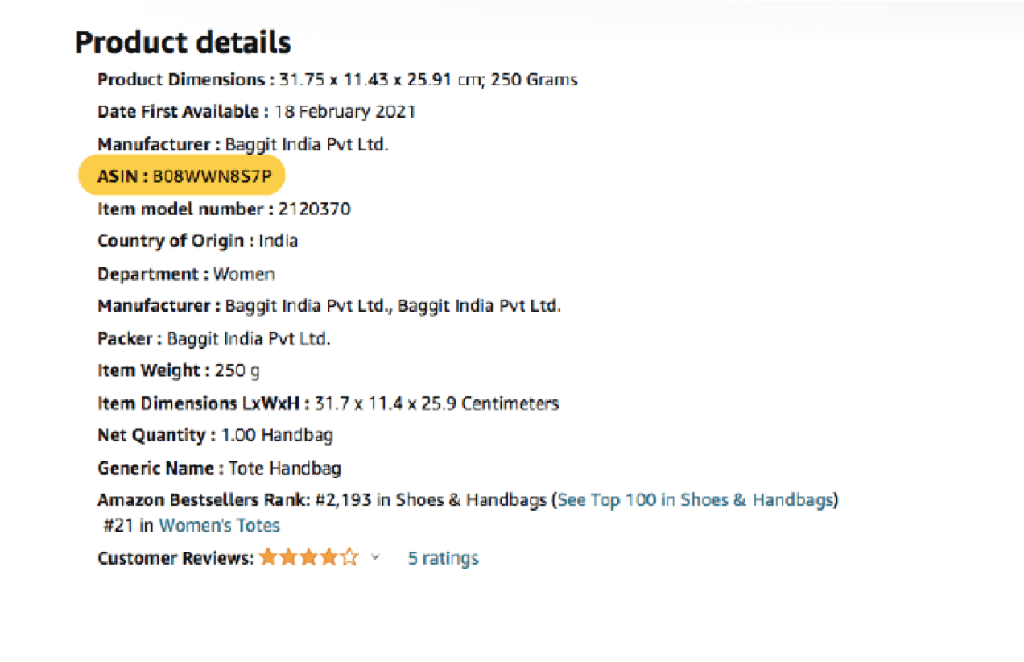
HOW TO STRUCTURE A PPC CAMPAIGN?
You can put your exact match keywords into your manual campaign, and your broad/phrase match keywords in your automatic campaign. This way, the best performing search terms are focused on exact matches while the automatic campaign discovers new potential keywords.
However, It is important to note that a single strategy might not be suit all amazon sellers. Not every Amazon seller sells the same type of product. We will look at different approaches that different types of sellers can implementin detail.
1. A single product seller
2. A single product seller with modifications
3. Multiple product seller
4. Company Campaign Structure
5. Wholesale Campaign Structure
SINGLE PRODUCT SELLER
This type of seller sells a single variety of products. Every amazon seller begins their journey from being a single product seller.
- For each product corresponding to a specific ASIN, you will have to create two campaigns – an automatic campaign and a manual campaign. In the automatic campaign, you let amazon decide the best keywords based on your product, title, and budget.
A manual campaign allows you to decide what keywords you want to include, and you can manually remove the keywords that aren’t bringing you sales. You are also in total control of how you spend the money during the campaign.
2. Your manual campaign should have three separate Ad Groups, one for each keyword match type – Broad Match, Phrase Match, and Exact Match.
Broad Match: Broad keyword match type is the least restrictive of all the match types. Since it matches a wider range of keywords, it should be used to expand the campaign’s reach. Your ad would show up when a potential buyer searches for a relatively closer variation of that exact keyword or with extra words before or after it.
Phrase Match: Phrase keyword match type is more restrictive than broad but has greater exposure than exact. For example, for the keyword denim jeans, the search terms denim jeans for women and blue denim jeans are also considered eligible.
Exact Match: Though the exact keyword match type is most restrictive than the rest, it is highly targeted and relevant. Your ad will not show if the shoppers’ search has additional words other than the exact keyword.
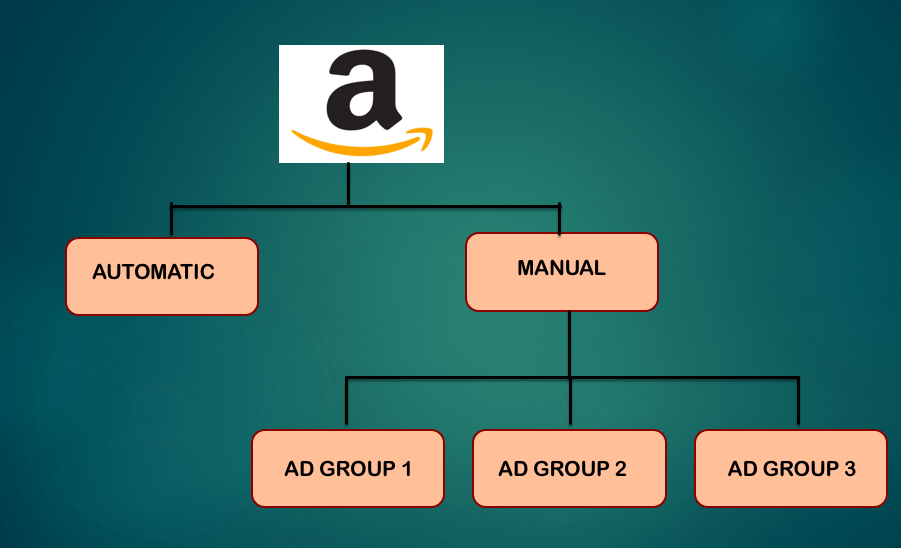
3. Let your automatic campaign run for a minimum of 1-2 weeks. Give it enough time to figure out the best-performing keywords.
4. After running the campaign for a week or two, check the report and select keywords with the highest conversion rate. Choose keywords with a good search volume and a less number of competing products.
5. Add them to your manual campaign.
6. Instead of choosing a default bid for the keywords, here, you can enter your choice of keywords and apply the suggested bid to them.
7. Choose a duration period for both the campaigns and launch them.
For faster results, run both manual and automatic campaigns simultaneously and add the keywords which bring maximum orders to the manual campaign. Any single ASIN account with a decent performance should have at least two or three Sponsored Product Ads or Sponsored Brands Ads running for your best-performing keywords.
This campaign structure is the easiest to manage and optimize as it involves a single product.
SINGLE PRODUCT SELLER WITH MODIFICATIONS
In this case, though it is a single product (same ASIN), you would provide different product variations. The most apparent product variations include size, quantity, or color.
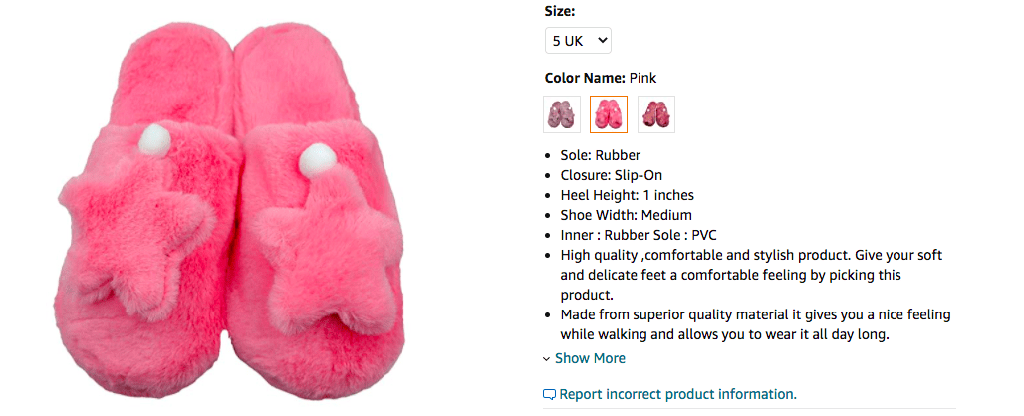
Usually, a multi-pack, a bigger-sized product, or a unique color would have a higher selling price. In such cases, is it a good idea to group them? For product variations that have different sales prices, you must put them in separate ad groups. All these have different prices, CTR, and CVR, so it is obvious to not just dump them together.
Besides, if you put 6 feet charging cable in the group containing a 3 feet cable, the ad might show up in the wrong place which isn’t benefitting you either way.
So, What should you do?
Despite the fact that your lower-priced variation would attract more clicks and traffic, your higher-priced variation would still be the one to bring profits because the conversion is worth much more. Figure out which variations are bringing you more profit margin and optimize your campaign structure accordingly.
MULTIPLE PRODUCT SELLER
Honestly, structuring PPC campaigns for multiple different products is much easier than a single product with variations. It would be better if you decide which products to put into the same group. There are two types of multiple product sellers:
- Multiple product seller with different products
- Multiple product seller with products of the same category
For different products:
In this case, each of your products has its conversion rates, selling price, keywords, etc. You have to optimize each one independently. If you happen to dump all of them in the same ad group, it’s going to create quite a mess.
So, What should you do?
You must place each product inside its ad group or campaign as they all compete for different search terms. Now, optimize targeting types, Sponsored ads, etc., for each product.
This is similar to creating campaigns for a single ASIN, only repeating, the process depending on the product type. If at all you encounter the same products with modifications, follow instruction 2.
For products of the same category:
This is going to be pretty complex as your products would compete against each other for the same search term. For example, these walkers compete for the same search results.
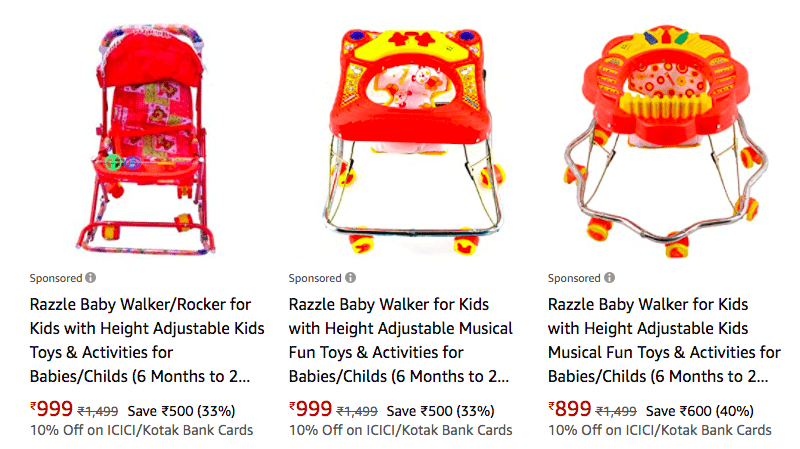
You might even wonder whether or not to put them under the same ad group in such cases. Frankly, this depends on the type of products you sell. You can divide the campaign by targeting type and then divide each ad group by product.
This requires a lot of experimenting. Implement, keep checking and then to see what works out well for you.
COMPANY CAMPAIGN STRUCTURE
This type of campaign structure is implemented by large companies that sell their products on amazon. If you are selling 5000+ products, it would not be very reasonable to create individual campaigns for each of them. It is also practically unmanageable.
So, What should you do?
Here, we use portfolios instead of campaigns. Portfolios are used to group multiple campaigns. For example, you sell products from your baby store, then baby soaps, baby shampoos, etc are all placed under baby wash.
You can further divide them and place them under different ad groups. This way, you will be able to organize your data better and optimize your PPC accordingly.
WHOLESALE CAMPAIGN STRUCTURE
This is the highest level of campaign structure and needs to be extraordinarily optimized and fuss-free. Otherwise, it would be impossible to analyze your search term data to optimize your PPC campaign. Despite the enormous number of products involved, it would still be better for each one to be placed in a separate ad group. This will save a lot of time and effort that would otherwise go in pondering which products would go together.
However, Amazon allows a maximum of 20,000 ad groups per campaign. In this case, you would have to create multiple campaigns to fit in an astronomical-seeming number of products into ad groups.
This was all about different strategies for different types of Amazon sellers.
But, Am I doing it right?
Remember, the bottom line for any business is the profit margin. This can be determined by setting a target ACOS.
If your ACOS is greater than your target ACOS, it means you’re spending more than required and. you should lower your bid. This way, you will also know if you can reduce your ad spend without affecting your sales.
If the ACOS is much lower, which indicates that the advertising cost is low, but you are making good profits, consider increasing your bid on that particular keyword. Though this might slightly decrease your profit margin, it can bring more sales.
GUIDELINES FOR OPTIMISING AMAZON PPC:
- Try to have a better idea about which keyword is in demand, which would face tough competition, and which one would be low in competition. A few keywords also do not bring in enough sales but take up most of your budget. Do make a note of them and take them and optimize your list accordingly.
2. Keeping a record of your finances is of utmost importance for an Amazon seller. Keeping track of your finances can help you manage your financial future to understand and manage your ad spend, cash flow, and profit margin. These records also a mandatory requirement to prepare and file proper solid tax returns. So remember, just don’t throw away the receipts and stuff but instead stack them up.
SUMMING UP
There are multiple correct ways to structure your PPC campaign. A few ways might work well for some but disappoint others. This is because no two amazon sellers think or sell alike. Everyone has the tweaks that would work out well for them. This was our take on optimizing PPC campaigns, and we hope this works well for you.

